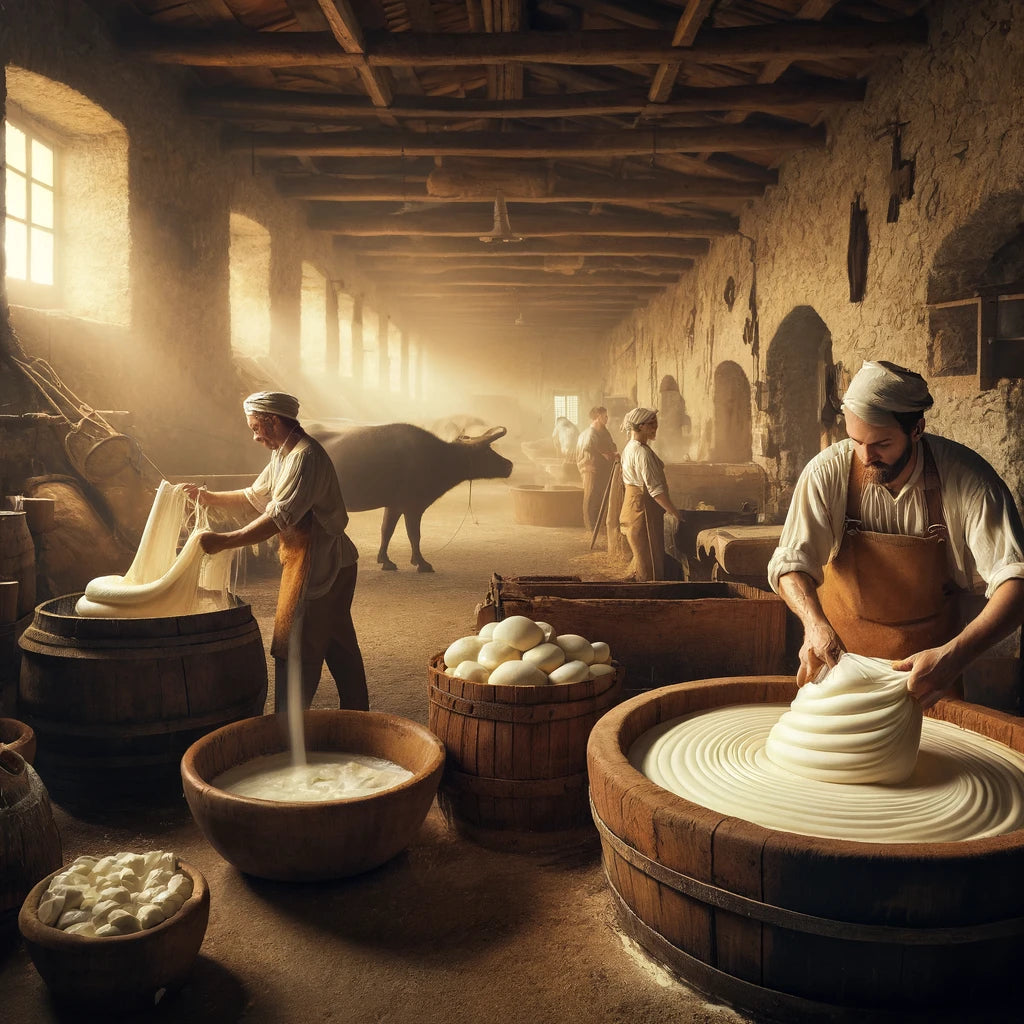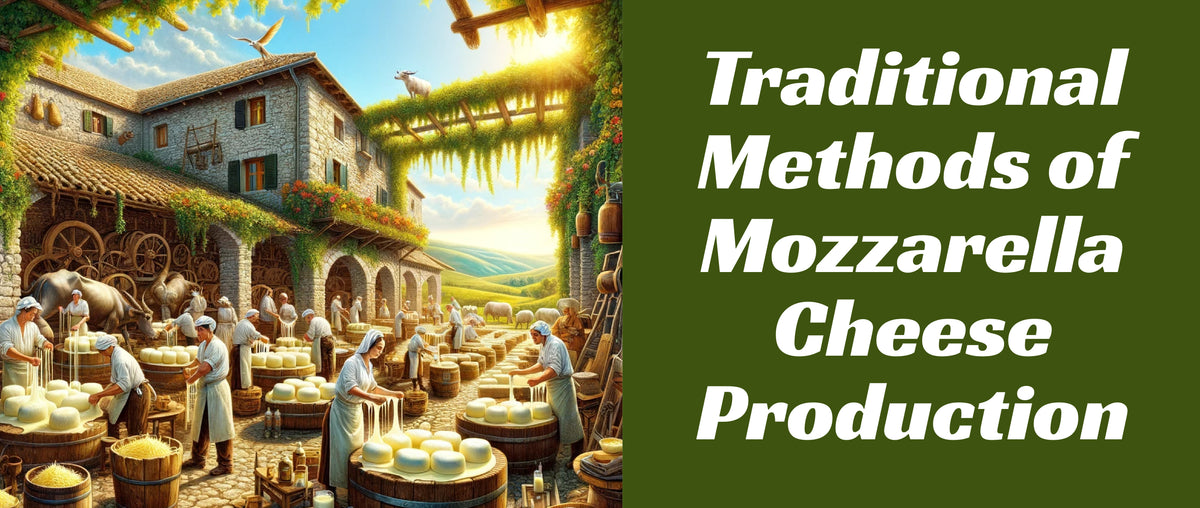Traditional Methods of Mozzarella Cheese Production
Mozzarella Cheese, with its origins steeped in the pastoral landscapes of Italy, embodies the essence of cheese-making craftsmanship. This beloved cheese, known for its delicate flavor and stringy texture, is a cornerstone of many culinary traditions. As we explore its traditional production methods, we also acknowledge the growing demand for Vegan products and plant-based alternatives, such as Cashew Butter and vegan butter , which represent a sustainable future in dairy and cheese production.
Key Takeaways
- Traditional Mozzarella Making: Emphasizes the importance of milk standardization, pasteurization, and the artful process of curd making, stretching, and molding, which are pivotal for achieving the classic texture and flavor of mozzarella cheese block.
- Equipment and Techniques: Highlights the need for specialized equipment tailored to the type of mozzarella being produced, underscoring the balance between artisanal craftsmanship and modern efficiency.
- Diversity of Mozzarella: Discusses various types of mozzarella, including mozzarella di bufala and fior di latte, alongside emerging vegan cheese options that cater to a wider range of dietary preferences.
- Packaging and Storage: Details the significance of proper packaging and storage methods in preserving the cheese's quality and extending its shelf life, applicable to both traditional and plant-based cheese products.
- Quality Control: Underlines the critical role of quality control measures in ensuring consistent taste, texture, and quality across all batches of mozzarella, whether conventional or plant-based.
Milk Preparation for Mozzarella Cheese
Standardization and Pasteurization
The journey of mozzarella begins with the meticulous preparation of milk. Standardization is crucial for achieving the desired fat-to-protein ratio, ensuring every batch of cheese maintains the same, consistent quality. Pasteurization, a process that eliminates harmful bacteria, also plays a pivotal role in ensuring the safety and quality of mozzarella cheese. This step is not just about safety; it's also about preserving the subtle flavors that define high-quality mozzarella.
Culturing and Coagulation
The addition of specific bacterial cultures to the milk initiates the coagulation process, where milk transforms into curd. This step is an art form, balancing the acidity to achieve the perfect texture and flavor. Traditional mozzarella production favors slow fermentation processes, allowing for the development of complex flavors reminiscent of the pastoral landscapes of its origin.

The Mozzarella Making Process
Curd Processing
Once coagulated, the curd is cut, cooked, and stretched—a process known as 'pasta filata'. This ancient technique is what gives mozzarella its distinctive, stringy texture. The curds are then matted and drained of whey, a process that requires precision and timing, ensuring the mozzarella has its characteristic softness yet firmness.
Stretching and Molding
The transformation of curd into mozzarella is a spectacle of culinary artistry. The stretching process, done by hand in traditional methods, is essential for aligning the protein fibers, which contributes to the cheese's stretchability. Molding shapes the cheese into various forms, from balls to braids, each with its own unique texture and taste profile.
Equipment in Mozzarella Production
Overview of Essential Equipment
Producing mozzarella requires specialized equipment, from vats for curd coagulation to molds for shaping the cheese. Modern advancements have introduced machinery that mimics traditional methods, ensuring consistency and efficiency without compromising the artisanal quality of the cheese.
Choosing the Right Equipment
The selection of equipment is determined by the scale of production and the specific type of mozzarella being made. For artisanal producers, smaller, more versatile equipment might be preferred, allowing for a hands-on approach to cheese-making.
In crafting this detailed exploration into mozzarella cheese production, we've bridged the gap between tradition and contemporary culinary practices. The incorporation of vegan cheese and plant-based cheese alternatives highlights the evolving landscape of cheese production, embracing sustainability and inclusivity.
Types of Mozzarella Cheese
Mozzarella's versatility is showcased through its various forms, each catering to different culinary needs. Traditional mozzarella di bufala made from water buffalo milk offers a richer taste, while fior di latte provides a cow's milk alternative. Innovations in vegan cheese alternatives, utilizing nuts like cashews for cashew butter or almonds, reflect the evolving palette and dietary choices of consumers worldwide, promising a mozzarella-like experience without animal products.
Packaging and Storage
The final steps in mozzarella production are critical for preserving freshness and extending shelf life. Packaging options range from vacuum-sealed bags to brine solutions, ensuring that the mozzarella maintains its moisture and texture until it reaches the consumer. Modern vegan products also follow suit, with fat free cheese varieties adopting similar packaging techniques to ensure product integrity.
Quality Control and Consistency
Consistency in texture, flavor, and quality is paramount in mozzarella production. Rigorous quality control measures, from pH monitoring to moisture content checks, ensure that each batch of mozzarella—whether traditional or a low fat cheese variant—meets the high standards expected by consumers. The integration of modern technology in these processes allows producers to maintain artisanal quality at a larger scale.
Conclusion
The tradition of mozzarella cheese production is a testament to the art of cheese-making. As we embrace modern dietary trends, including the rise of vegan cheese and fat-free cheese options, the essence of mozzarella remains unchanged: a commitment to quality, taste, and the joy of sharing food. The future of mozzarella lies in balancing these timeless traditions with the innovation and sustainability of plant-based alternatives, ensuring that this beloved cheese continues to be enjoyed by generations to come.








